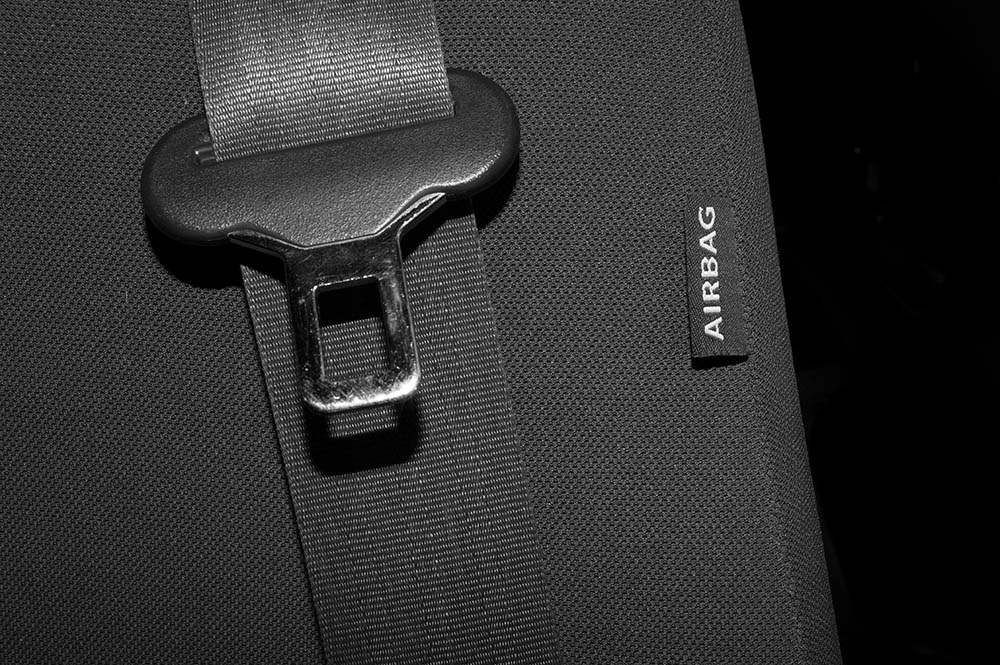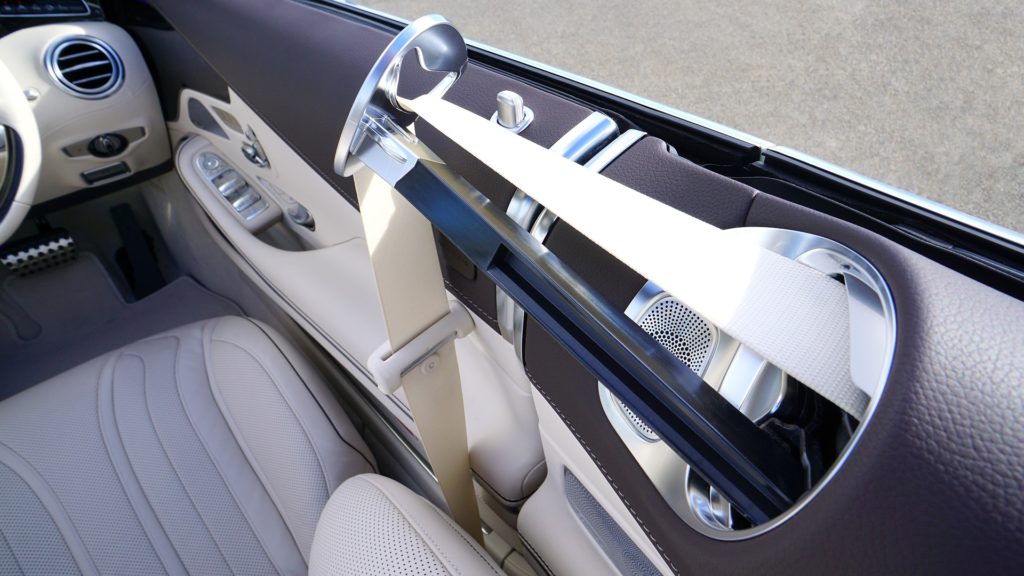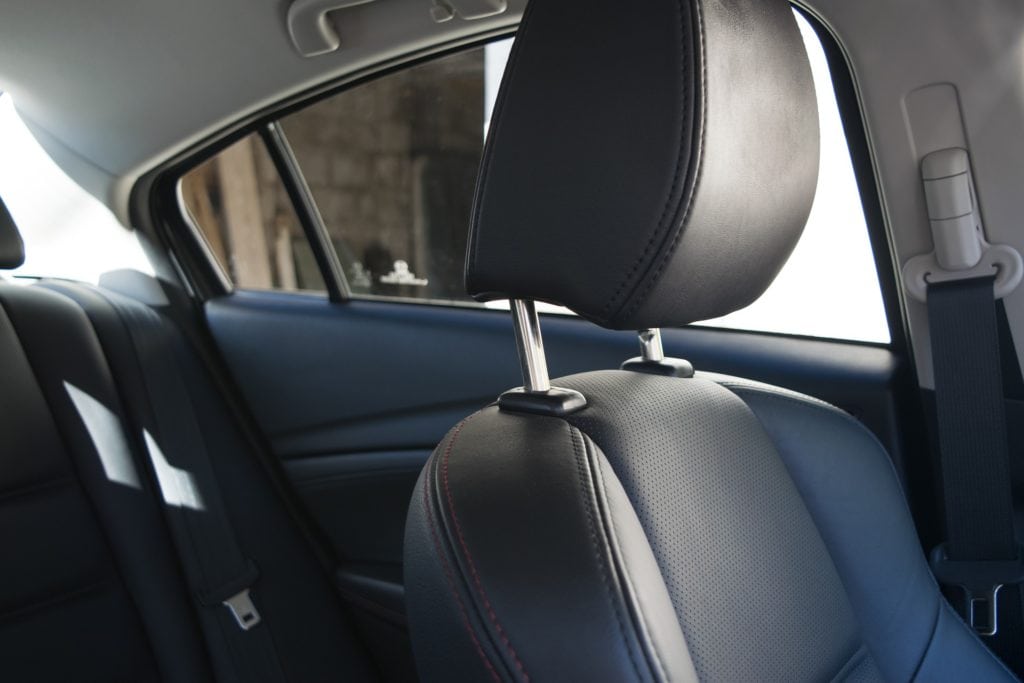How To Fix a Stuck Seatbelt: 5 Simple Tips & Tricks
-
Shea Cummings
- Last updated:

Seatbelts are critical to staying safe while operating or being in a motorized vehicle. But if they aren’t working properly, you may not wear them, or they might not even function properly. Fortunately, if your seatbelt becomes stuck, it’s not uncommon and is typically easy to fix.
Below we’ve gathered 5 tips and tricks for fixing a stuck seatbelt. Keep in mind that if these hacks don’t solve the issue, it’s important that you get your vehicle into a trusted auto repair shop to ensure there is nothing wrong with the seatbelt. An accident is not a good time to find this out.

The 5 Tips and Tricks to Fix a Stuck Seatbelt
1. Check for Blockages

Seatbelts are designed to slide out and retract automatically. While it’s coming out or going in, it’s not unheard of for debris or something to get lodged in the retracting mechanism. If this happens, it may simply be harder to use. It could also stop it from going in and out.
So, if your seatbelt becomes stuck, you’ll first want to check for a blockage at the retraction mechanism. First, this prevents the belt from being damaged by whatever’s blocking it and enables you to use it properly.
2. Buckle and Unbuckle
The auto-lock feature that most seatbelts have can be quite annoying. If you’ve ever just barely gotten your belt on before it locks on you, you can understand the frustration. Sometimes the simplest fix is to buckle and unbuckle the latch. Often this releases enough tension to allow the seatbelt to move freely.
3. Untwist the Belt

If you’re not paying attention, it’s easy for a seatbelt to get twisted over time. This is especially true if you’ve got little ones riding in the vehicle. A twisted seatbelt does two things. First, it could actually compromise how well the belt does its job. For example, in an accident, if the belt is twisted, it’s possible that it could do preventable damage.
The other thing is that it could cause the retraction mechanism to get stuck. The easiest way to solve this is to pull the entire length of the seat belt out and follow it from where it attaches to the car and untwist it.
4. Release the Auto-Lock
If your seatbelt gets stuck, the auto-lock mechanism may have engaged. This can simply happen from pulling the belt out too quickly. If this happens, you won’t be able to pull the belt out.
A common way to fix this issue is to allow the belt to retract slightly and then gently pull the belt out until it’s fully extended. Once you let it back in, the auto-lock is typically disabled at that point.
5. Replace Broken Components

If you’ve tried the above tricks, your seatbelt system may have a broken component. In many cases, this should be done by a trained professional. However, suppose you’re comfortable with these types of repairs. In that case, there are many different videos and how-tos available to replace various seatbelt mechanisms.

Preventing Seatbelt Malfunction or Damage
Sometimes a seatbelt gets stuck for any number of reasons. But ideally, you want to prevent malfunction or damage. Because if a seatbelt is damaged or malfunctions at the wrong time, it could be disastrous.
Keep it Clean
Over time, a seatbelt can get dirty by being pulled out and retracting with little bits of debris into the mechanism. A little bit won’t hurt, but eventually, it could build up enough to cause problems. Cleaning the belt regularly can help prevent this.
A seatbelt is easy to clean. Simply pull it all the way out and wash it with warm water and a small amount of detergent. You don’t want it to be soaking wet because if it doesn’t dry properly, you may get mold.
Keep Sharp Objects Away
If the webbing is damaged by a knife or another sharp object, its tensile strength is instantly compromised. And if it can’t withstand the force it is supposed to, there’s a chance it won’t stop a person from being ejected.
This is as simple as ensuring there is nothing sharp near the belt. And trying to prevent anything from getting wedged into the retracting mechanism because that could compromise the belt with small nicks.

Replace When Needed
When the time comes, replace the belt or have it fixed. If you start having issues that can’t be solved with the tips and tricks. The mechanism may be nearing the end of its life.

Closing Thoughts
The auto-lock mechanism is a common annoyance and is relatively easy to fix in most cases. However, this system isn’t the only thing that can malfunction when dealing with the entire seatbelt setup.
If you’re comfortable with DIY tasks and have a few tools that may be needed if you want to pull the mechanism apart, that’s great. But if you’re not comfortable with the job, your car’s seatbelt isn’t something you want to guess at, so you’re better off taking it to a trusted mechanic.
- See Also: What Is a Seatbelt Pretensioner?
Featured Image Credit: Patcharanan, Shutterstock
Contents

